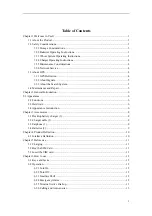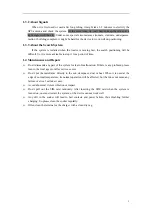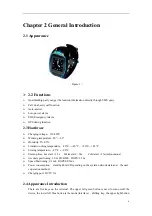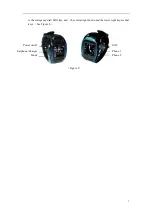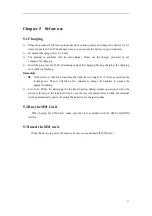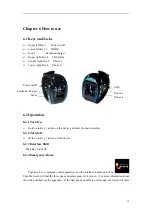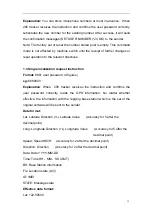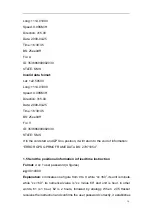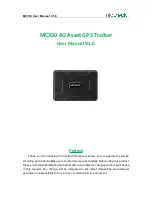
waves it produces might remove the information saved on the floppy disk, the magnetic card
or the credit card.
¾
Keep the batteries of dampness. The entrance of water or other liquids will result in overheat,
creep age or malfunction of the terminal.
1.2.4 Charger Operating Instructions
¾
Please use the 220V alternating current only for fear of leakage or burning of or damage to
the terminal or the charger.
¾
Don’t short out the charger for fear of electrical shock or smoking of or damage to the
charger.
¾
In case of the splashing of water or other liquids into the charger during the battery charging,
please disconnect the charger at once for fear of overheat, burning, electrical shock or
malfunction of the charger.
¾
Don’t dismantle or refit the charger for fear of personal injury, electrical shock, fire or
damage to the charger.
¾
Don’t use the charger in a wet place, such as a bathroom, for fear of electrical shock, fire or
damage to the charger.
¾
Don’t touch the charging charger with your wet hand for fear of electrical shock.
1.2.5 Maintenance Considerations
¾
As the terminal, the batteries and the charger are not waterproof, don’t use them in a highly
wet place (such as a bathroom) or in the rain.
¾
Only the maintenance personnel specially trained by our company are allowed to repair the
product. Any unauthorized disassembly or repair on this product might disable the warranty
or lead to damage to this product.
1.2.6 Network Service
As the function realization of the product depends on the mobile network service
,
one
must first apply to the mobile service providers for the GPRS network service for the mobile
phone concerned and that for the SIM card inside the terminal. For more information about
the usage and charge of the SIM card, please consult the local mobile network service
providers.
1.3 About GPS
The following is about how to use the GPS device. Please read it before using the device,
so as to increase its service efficiency.
1.3.1 GPS Definition
GPS is the abbreviation of Global Positioning System, a system developed by the US
Department of Defense and jointly used and managed by the US Department of
Transportation and the former, defining the location by means of satellites. GPS system
consists of 24 satellites, through which the desired information is received by means of
electric waves to work out the current location. Generally the error range for GPS positioning
is below 15 meters.
4


